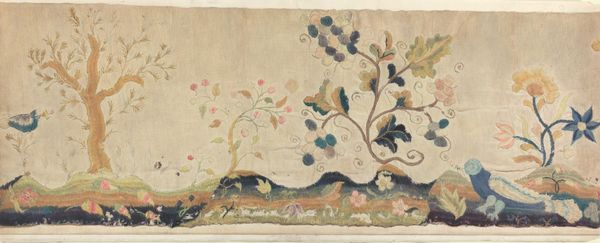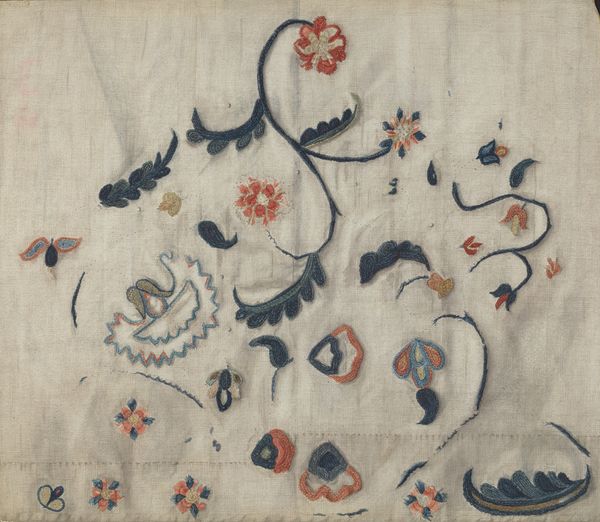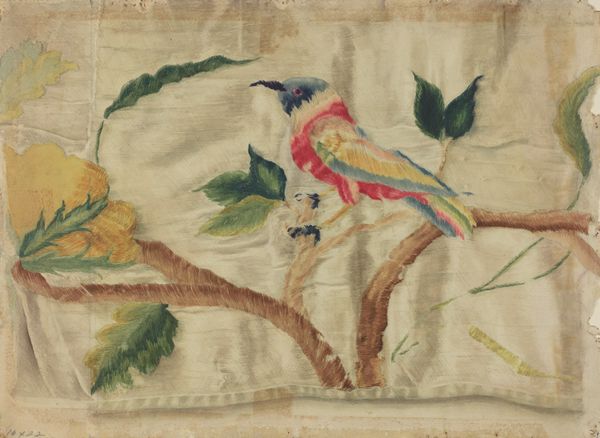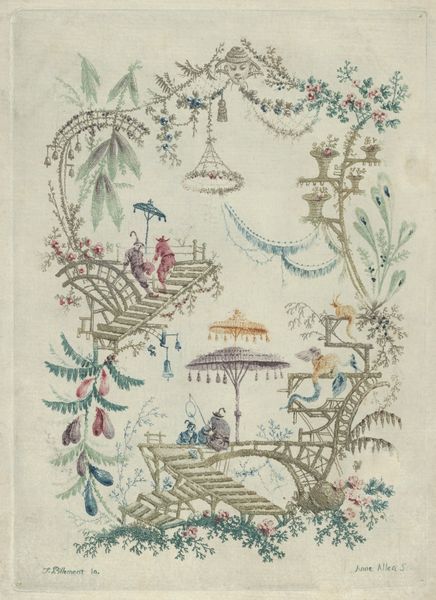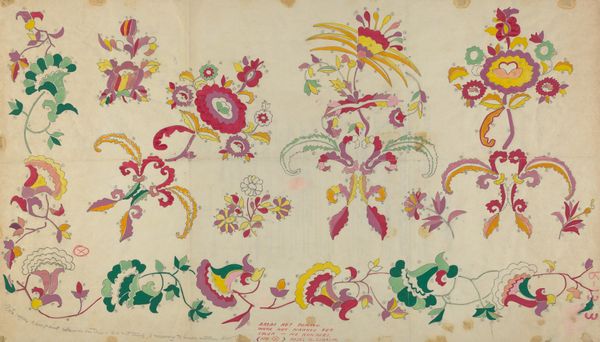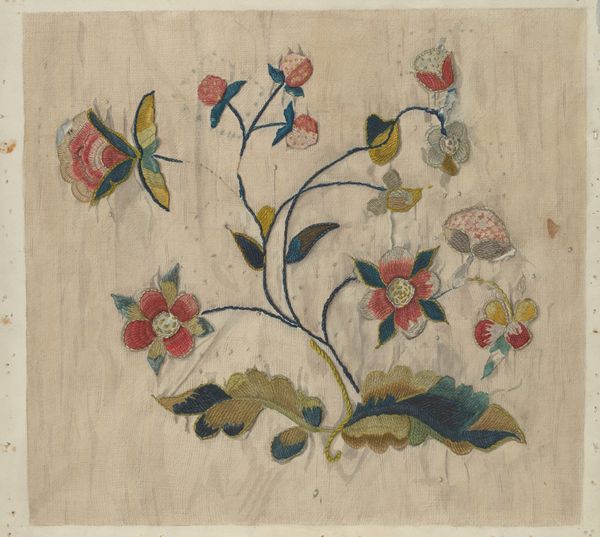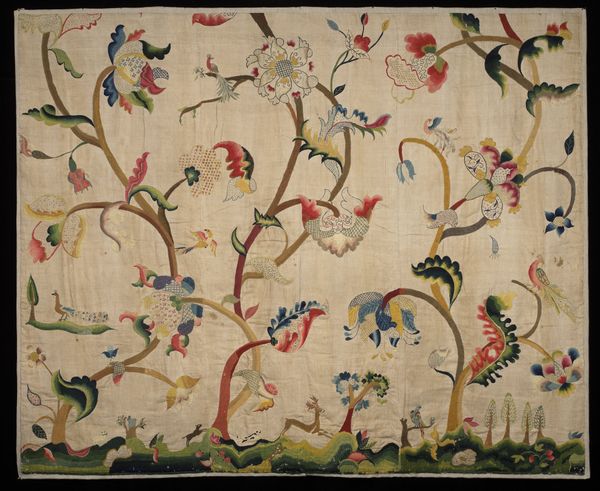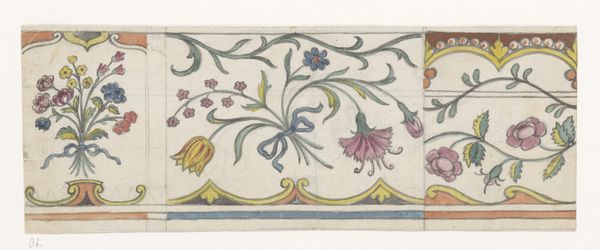
drawing, textile
#
drawing
#
landscape
#
textile
#
figuration
#
folk-art
Dimensions: overall: 27.7 x 37.4 cm (10 7/8 x 14 3/4 in.)
Copyright: National Gallery of Art: CC0 1.0
Curator: Elizabeth Moutal's "Embroidery," created around 1936, presents a charming pastoral scene worked in thread on textile. What strikes you first about it? Editor: The naïve rendering, I'd say. The slightly awkward but delightful proportions and placement of elements lend the work a kind of folk-art sincerity. Curator: Indeed. We can consider the textile itself: the ground upon which this imagined landscape unfolds. What kind of material, what quality of weave, and its availability, would tell us much about Moutal's access to resources, and potentially, her social position during this period. Editor: And speaking of surfaces, the textures are very inviting, the different layering techniques, from flat areas to piled-up stitches. This provides not only visual contrast but also literal depth to the image. Curator: The scene depicts stylized flora and fauna. There's a deer, a dog, a pair of birds, and a butterfly, inhabiting a dream-like meadow populated with fantastic flowers. Consider that needlework during this era was often gendered as 'women's work,' implying constraints of both time and access to certain professional venues. Editor: That's interesting because I would have interpreted the work purely visually—examining how these forms echo one another across the space, for example the curving lines of the flower petals are a counterpoint to the antlers on the deer, creating visual harmony, pulling the piece together formally. Curator: Don't dismiss what its creation might represent regarding constraints, but also freedom, and even resistance to them. Embroidery provided a creative outlet that circumvented some of the male-dominated art world practices. This could have been a quiet act of rebellion. Editor: It highlights, however, how closely the personal, political, and artistic intersect. Moutal has managed to turn these relatively quotidian materials into a complex aesthetic statement. Curator: It demonstrates that even within the traditionally domestic space, art is a vital, transformative process. Editor: A point well taken; Moutal's skillful arrangement draws us into this world that has been beautifully brought into being, both visually, and historically. Curator: Exactly, seeing the piece both for what it is and how it got there offers valuable insights.
Comments
No comments
Be the first to comment and join the conversation on the ultimate creative platform.


